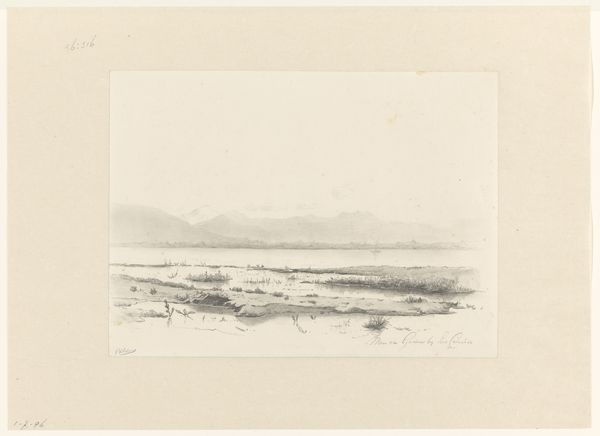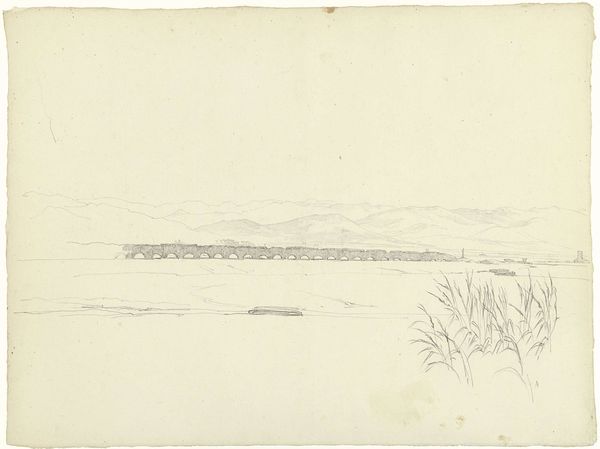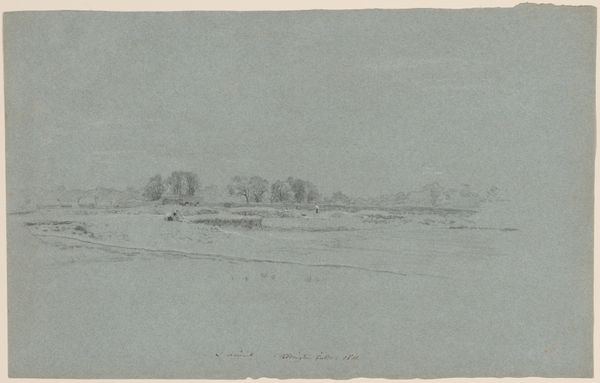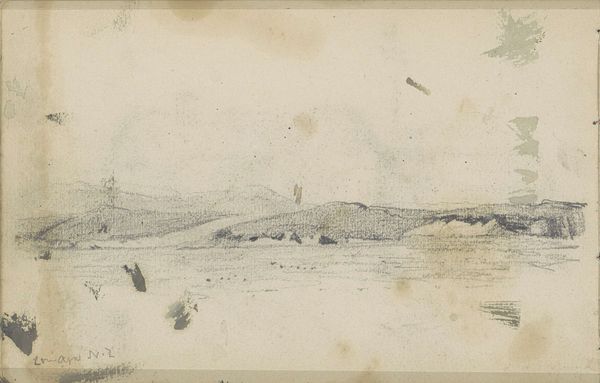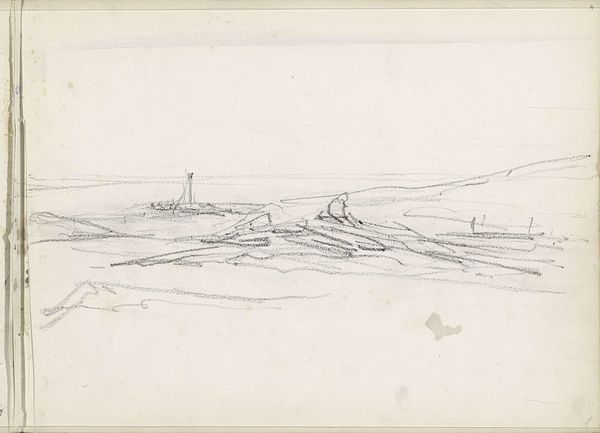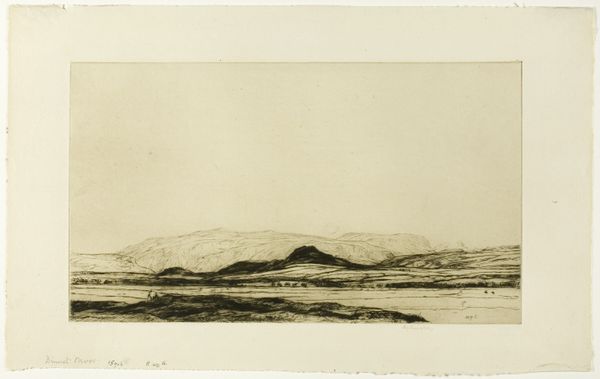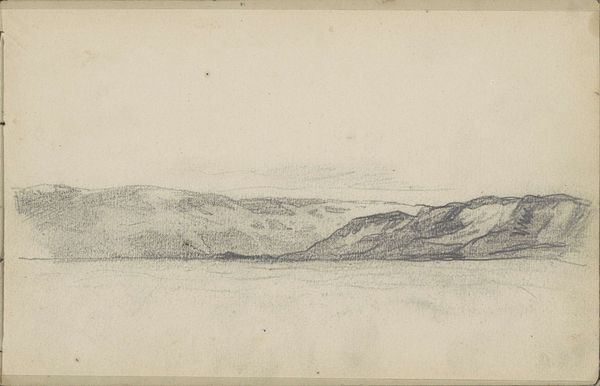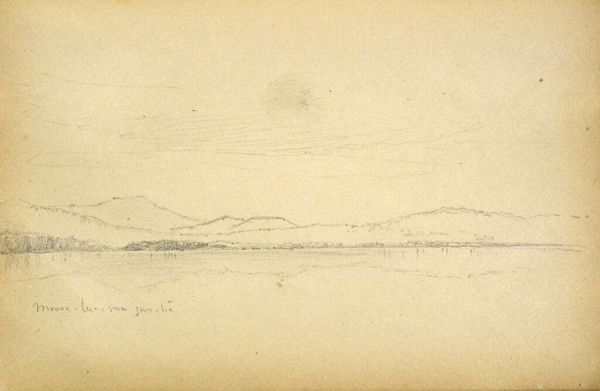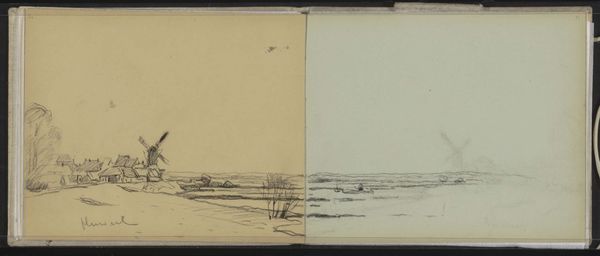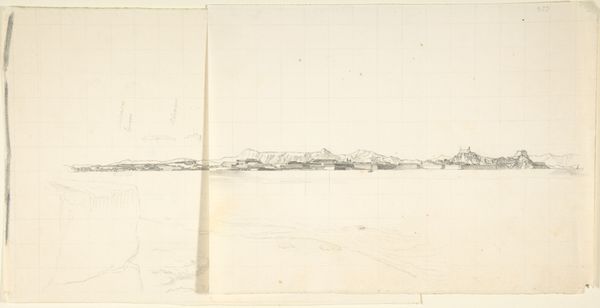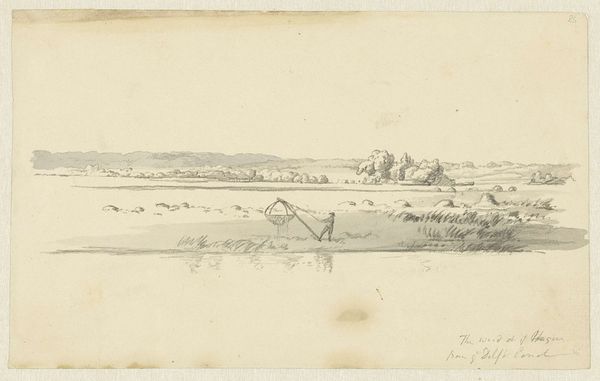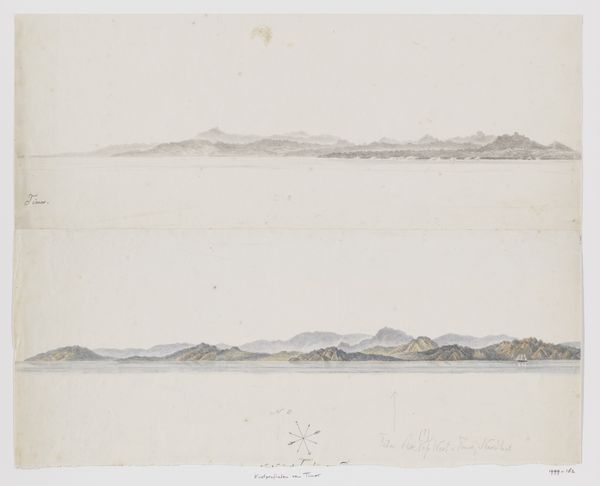
drawing, paper, pencil
#
drawing
#
landscape
#
paper
#
romanticism
#
pencil
#
italian-renaissance
Dimensions: height 241 mm, width 368 mm
Copyright: Rijks Museum: Open Domain
Editor: Here we have Josephus Augustus Knip’s “The Tiber at Fiumicino,” a pencil drawing on paper dating from around 1809 to 1812. It's… quite stark. The scene is very horizontal, almost divided into two similar planes. What strikes you about this work? Curator: Well, I think the division you note is crucial. The Tiber wasn’t just a river; it was a major artery for Rome, connecting it to the sea. To depict it in this bifurcated way hints at the shifting power dynamics of the era. The early 19th century saw a decline in papal power and the rise of Napoleonic influence in the Italian peninsula. Editor: So, the separation might symbolize that disruption? Curator: Precisely. Also, note the seemingly detached, almost scientific rendering. It lacks the overtly dramatic flourishes typical of earlier landscape paintings, doesn’t it? That objectivity reflects the changing role of art. No longer purely celebratory or propagandistic, art begins to grapple with documenting social and political change with a perceived neutrality. Editor: I see your point. The very act of depicting the river "as is," without idealizing it, could be a commentary. Does the choice of pencil and paper also say something about the politics of imagery? Curator: Absolutely. Pencil drawings, although capable of great detail, were often considered studies, preparatory works. Using it as the final medium could indicate a move away from grand, imposing statements to more accessible, critical observations. Think about how this could affect who could create art and how it was distributed or consumed by the public. Editor: Interesting. I never thought about it that way, about how even the medium could have political implications. Curator: It's all interconnected! By looking at the social and political contexts, we can decode these visual choices in incredibly meaningful ways. Editor: I’ll definitely consider the socio-political landscape when I see artwork moving forward. Thank you!
Comments
rijksmuseum about 2 years ago
⋮
The plain to the west of Rome, the low-lying land between the city and the Tyrrhenian coastline, was as good as empty in Knip’s day. The artist masterfully portrayed this desolation in this minimalist drawing. Nowadays, it is home to Rome’s Leonardo da Vinci International Airport, also known simply as Fiumicino, after the nearby seaside resort.
Join the conversation
Join millions of artists and users on Artera today and experience the ultimate creative platform.

